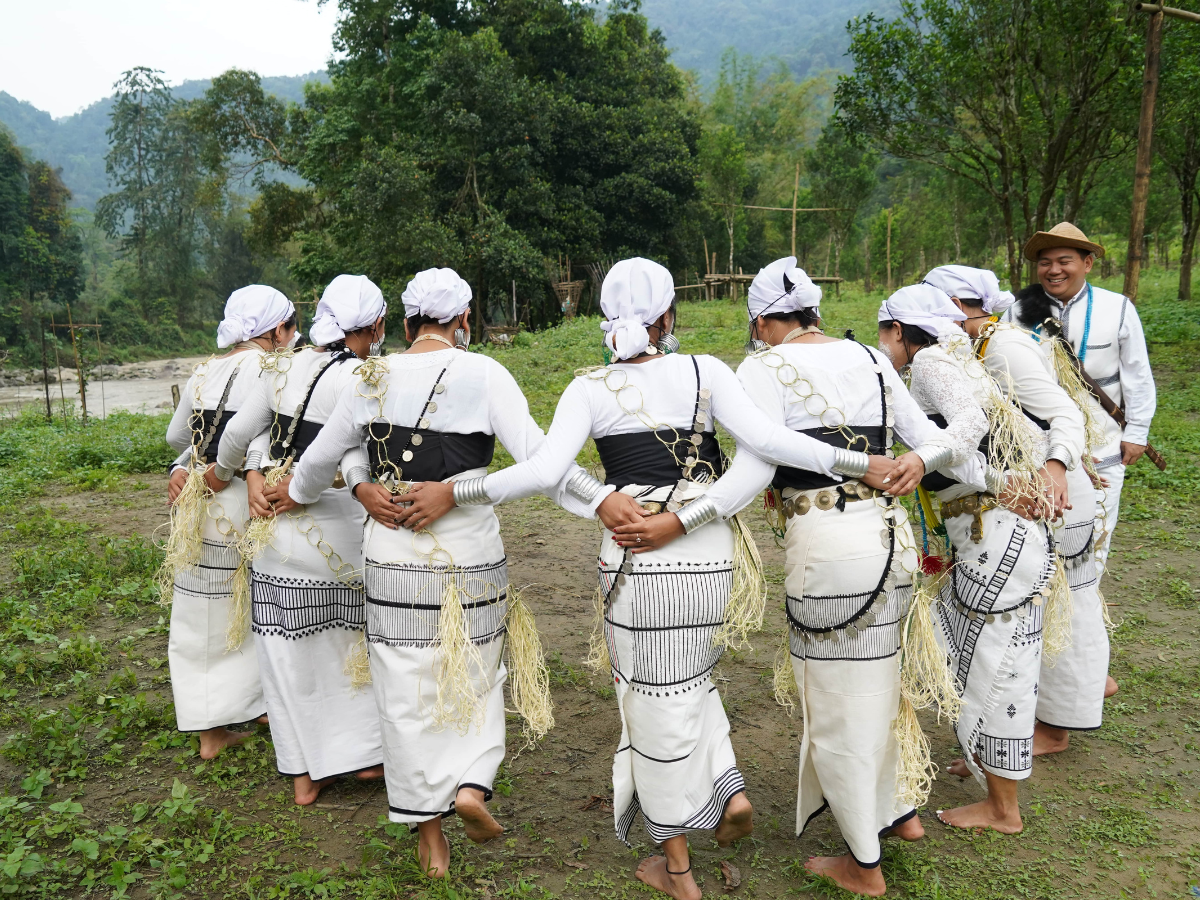
tribal fairs and festivals
Mopin Festival , arunachal pradesh
The Mopin Festival is an annual observance of the Galo tribe, which is celebrated on the fifth of April of each year, marking the commencement of the agricultural cycle. The festival was named in honor of Mopin Ane, the Goddess of prosperity and fertility, with all color, music, and fun. It entails various rituals, bespeaking nature and spirituality, and empowers blessings for bounteous harvests and shields the harvest from evil spirits. The atmosphere is alive with celebration, an epitome of the Galo people whose bonding with their land and cultural roots go a long way.
The Galo tribe is primarily found in Arunachal Pradesh and based on agriculture and spiritual traditions. The Galos worship natural and ancestral deities during festivals and practice the Donyi-Polo faith (Sun-Moon). The Mopin Festival has special significance for the tribe because it is a time when they express their reverence for Mopin Ane by praying for the prosperity of their community. By celebrating in great splendor, the Galos preserve their cultural identity, merging their heritage with spiritual practices handed down through generations.
During Mopin, the Popir dance stands out as a key ritual, performed by Galo women and led by a Nyibu (priest) and Miri (folk singer). They carry rele bongos (bamboo baskets) to receive Donyi Polo's blessings. Central to the festival is the Mithun sacrifice, symbolizing devotion to Mopin Ane; its blood is shared as a blessing. The smeared rice flour (ette) on faces symbolizes love and harmony, creating unity within the Galo community.
Popir dance is a graceful performance showcasing the Galos’ cultural richness. The dancers, forming a circular chain, sway rhythmically to Miri’s music on the Yoksha, a unique instrument that rattles. The women wear white blouses, wrap skirts with red embroidery, and coin -adorned belts. The traditional attire and dance reflect the Galos' respect for their spiritual beliefs and agricultural heritage, making Mopin a time of unity and celebration.
Community participation is central to Mopin, as the entire Galo tribe gathers to honor Mopin Ane and seek prosperity. People of all ages join the rituals, dance, and feasting, strengthening bonds and traditions within the community. From the elders to youth, each individual contributes to storytelling, blessings, and celebrations. Through shared customs and collective worship, Mopin becomes an enduring expression of cultural pride and identity for the Galo people.


